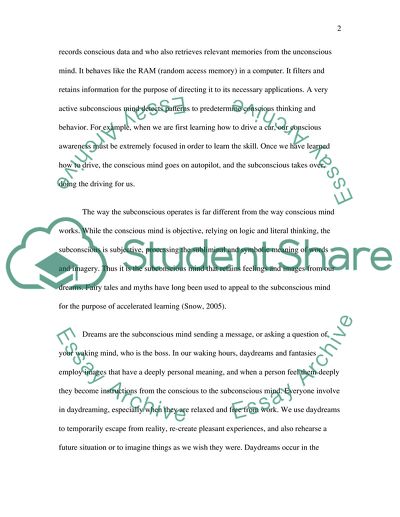Conscious and subconscious information processing Essay. Retrieved from https://studentshare.org/miscellaneous/1535662-conscious-and-subconscious-information-processing
Conscious and Subconscious Information Processing Essay. https://studentshare.org/miscellaneous/1535662-conscious-and-subconscious-information-processing.


